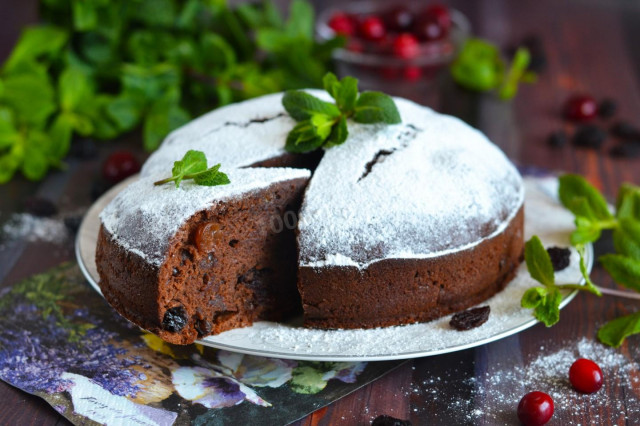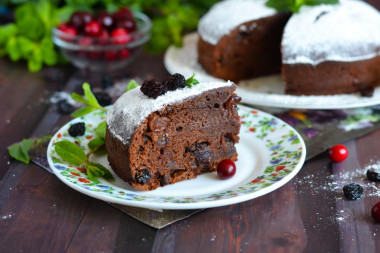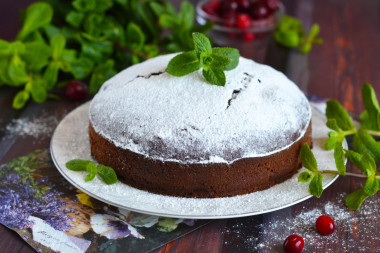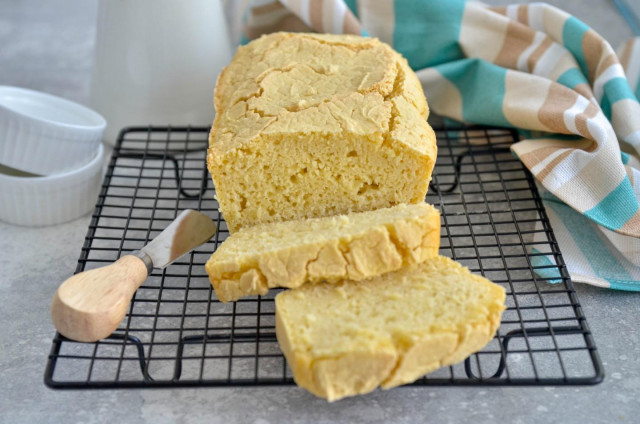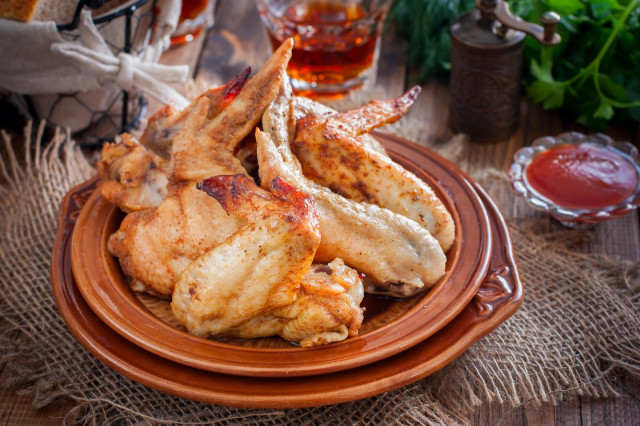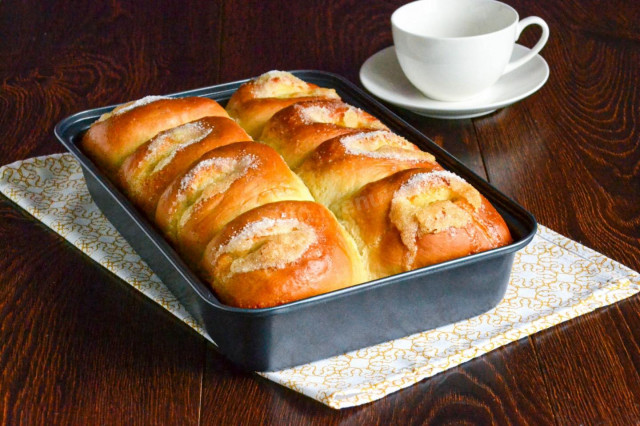Composition / ingredients
Step-by-step cooking
Step 1:

How to make a lenten honey monastery cake? Very simple. First, prepare the necessary ingredients. Use flour of the highest grade. Honey will suit any, dark or light. I have a flower. Just keep in mind that the taste of honey can affect the final taste of the gingerbread (especially if the honey is bitter).
Step 2:
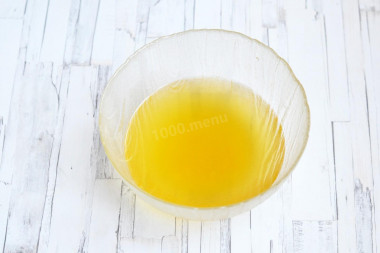
Heat the water slightly (to about 50-55 ° C). Add honey, sugar and stir until smooth. It is advisable to use liquid honey for the recipe, but if you have candied honey, then hot water will melt it quickly. Leave the mixture for a couple of minutes so that the sugar completely dissolves and the water cools slightly.
Step 3:

Sift 200 g of flour separately into a bowl. Pour the sifted cocoa into the flour. Be sure to sift cocoa, otherwise you will have to get rid of lumps later. Add nutmeg, cinnamon, ginger, salt and baking powder.
Step 4:

Mix the dry mixture well.
Step 5:

Pour water with honey and sugar into the flour mixture. With a whisk, mix everything thoroughly until smooth. The mass will turn out to be quite fluid.
Step 6:

Pour in the sunflower oil and mix again until smooth.
Step 7:
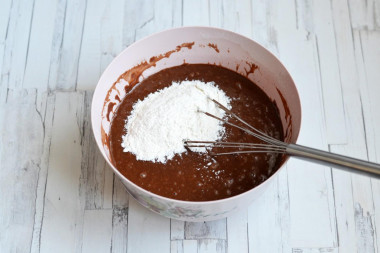
Gradually pour in another 50-80 g of sifted flour until a homogeneous thick, but flowing dough is obtained. It should flow down from the spoon (spatula) in a wide, smooth, continuous ribbon and fall in waves. You may take more or less flour than I do. Be guided by the consistency of the dough.
Step 8:

Pre-wash and dry the raisins on a paper towel. You can choose the varieties of raisins according to your taste. I have a mixture of small brown raisins and large dark ones. You can mix 3-4 kinds of raisins at once.
Step 9:
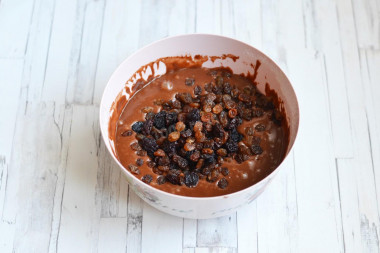
Mix the raisins into the dough. The dough should have such a consistency that the raisins do not sink into it, but are evenly distributed over the entire thickness of the dough. Therefore, if you see that the raisins have all sunk to the bottom, then the dough is not dense enough (it does not hold the raisins) and you need to add more flour. In addition to raisins, you can add other dried fruits or nuts.
Step 10:
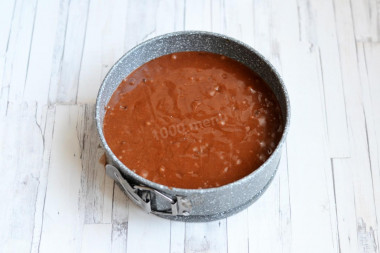
Put the dough into a baking dish lined with parchment and oiled (I have a mold diameter of 18 cm), twist the mold slightly so that the dough is evenly distributed.
Step 11:
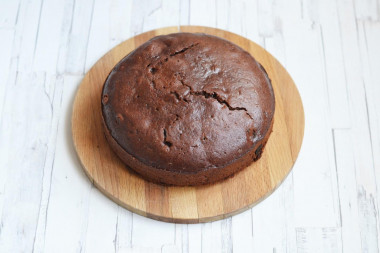
Bake the gingerbread in a preheated 180 ° C oven for about 45-50 minutes. Check readiness with a skewer - it should come out dry. Remove the finished gingerbread from the mold and cool completely. Determine the exact time and temperature of baking according to your oven.
Step 12:
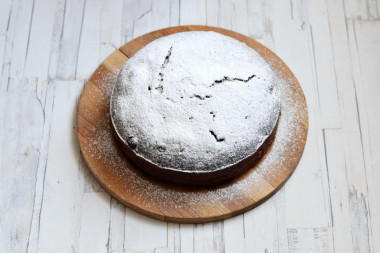
If desired, sprinkle the cooled monastery cake with powdered sugar. Done. You can serve it to the table. With proper storage - in a closed bag in a dark place - the gingerbread does not dry out even on the third day and remains as soft as on the day of cooking. Enjoy your meal!
Be prepared for the fact that flour may need more or less than indicated in the recipe. Focus not on the amount of flour, but on the desired consistency of the dough. To avoid mistakes, read about flour and its properties!
Keep in mind that everyone's ovens are different. The temperature and cooking time may differ from those specified in the recipe. To make any baked dish successful, use useful information about the features of ovens!
Calorie content of products possible in the composition of the dish
- Honey - 400 kcal/100g
- Ginger - 80 kcal/100g
- Dry ginger - 347 kcal/100g
- Pickled ginger - 51 kcal/100g
- Cinnamon - 247 kcal/100g
- Whole durum wheat flour fortified - 333 kcal/100g
- Whole durum wheat flour, universal - 364 kcal/100g
- Flour krupchatka - 348 kcal/100g
- Flour - 325 kcal/100g
- Granulated sugar - 398 kcal/100g
- Sugar - 398 kcal/100g
- Raisins - 280 kcal/100g
- Kishmish - 279 kcal/100g
- Cocoa powder - 374 kcal/100g
- Salt - 0 kcal/100g
- Water - 0 kcal/100g
- Sunflower oil - 898 kcal/100g
- Refined sunflower oil - 899 kcal/100g
- Baking powder - 79 kcal/100g
- Nutmeg - 556 kcal/100g

